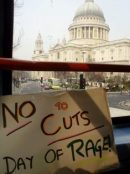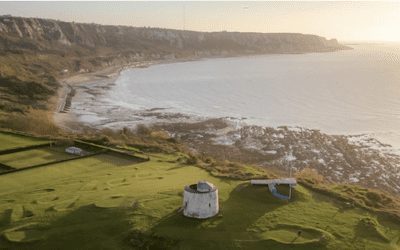[dropcap style=”font-size:100px; color:#992211;”]E[/dropcap]ntering Polly Borland’s Smudge exhibition is like entering a nightmarish Studio Ghibli theme park, only even more disturbing as the characters are constructed on top of living models.
Larger-than life portraits of half-formed almost-familiar cartoonish faces and bodies all at once invite and repel the viewer, bringing to mind Jeff Koon’s Winter Bears sculptures. Lipstick countenances drawn on flesh-coloured tights concealing models’ faces have a disarming familiarity. Frustratingly elusive allusions stare blankly at us, demanding interpretation and giving nothing away.
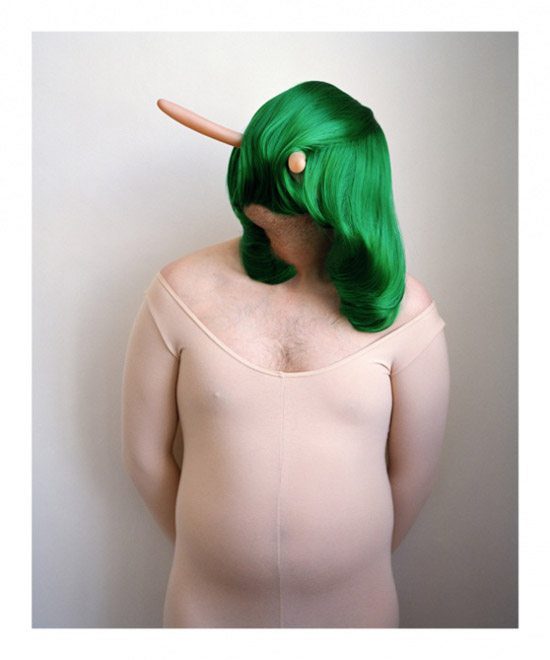
Pressed up against the walls of Other Criteria gallery by the mass of people, we are forced to get up close and personal with these portraits. They are mostly variations on the same theme: A nude model shot from waist or knee up, clad in a black or beige body stocking, with painted tights covering the face and possibly a wig on the head. Even this starting point alone creates a sense of playful unease. Having their faces obscured, each of them become identifiable only by other aspects of thier anatomy: body shape, veins on the skin, posture. The three models, Nick Cave, photographer Mark Vessey and fashion designer Sherald Lambden, are all in attendance at the opening and being pored over by viewers trying to match the photographed semi-naked body to the real clothed one. Despite every effort being made to neutralise the figures, to create blank slates, we find ourselves therefore obsessed with figuring them out, scrutinising every flash of the person beneath the illusion.

What of the constructions themselves? Wigs of various colours, rubber noses, cotton balls under the tights to create bulbous growths, crayon/lipstick clown faces applied to the fabric and enlarged latex body parts tacked on combined to form individual, never quite complete, beings. These often androgynous beings resemble failed prototypes for blow up sex dolls or mix-ups at the Barbie factory or the doodlings of a hentai animator. The sexual, whilst being carefully removed from the human bodies themselves, is suggested by phallic ‘noses’ or lipstick spots on the crotch. The indirect perversity is perhaps the most disturbing and laudable achievement of all. The very fact that it is inexplicit yet unavoidably brought to mind forces us to question our own decency. Why are we reading this into the art? Is this what we’re meant to see or our own dirty mind?
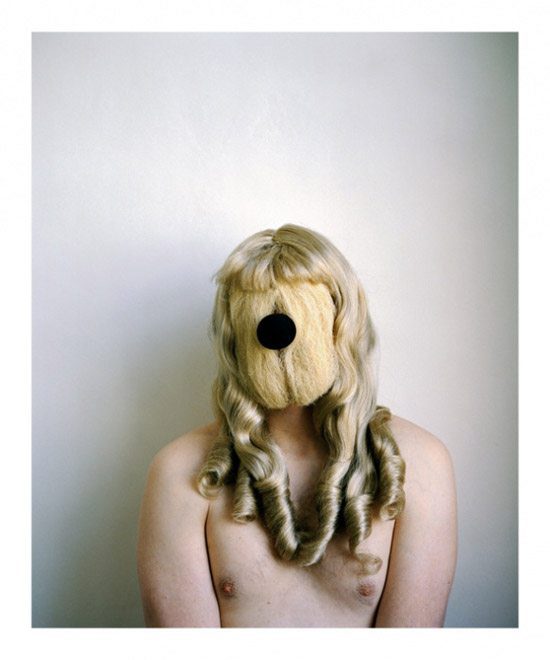
For those pieces which appear obliquely sexual are those which are strangely foetal. The suggestion of a smooth, embryonic body that is not yet fully formed, has no nipples, no hair and no teeth, is created through absence of alterations on the base structure. These ‘innocent’ works sit next to those which would seemingly seek to corrupt us, making for a see-saw exhibition experience, and a most effective one. Pity these works are to be sold separately, as I’m sure much of this emotional questioning will be lost outside of the grouped exhibition.
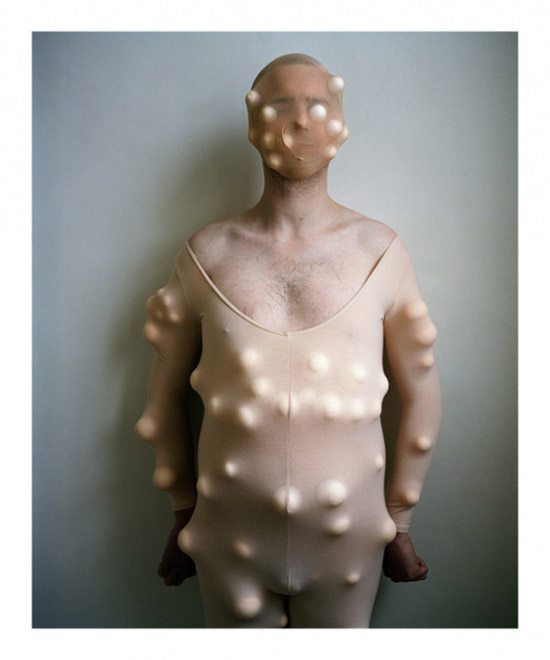
Despite the psychological complexity of the experience, I find I do in fact like some of the works. The most intriguing are those whose ‘faces’ recall characters from childhood that one struggles to remember when contemplating it. Blonde wigs on dog faces bring to mind Goldilocks or Pluto, Mickey Mouse ears sit on an unrelated set of eyes and mouth that make me think I’ve forgotten some whole cartoon figure from the past, a loss I lament even if it isn’t real. The spirit of dress-up is here made adult. One must neutralise the adult body, bring back the smooth, naked innocence of youth, and then attempt to re-create the lost favourite character. However, the end result is skewed and malformed, ‘smudged’, because we do not have the clarity of the infantile imagination. What is produced, however, is not entirely worthless, but all the more intruiging for being such an unashamed representation of the desire and experiment.
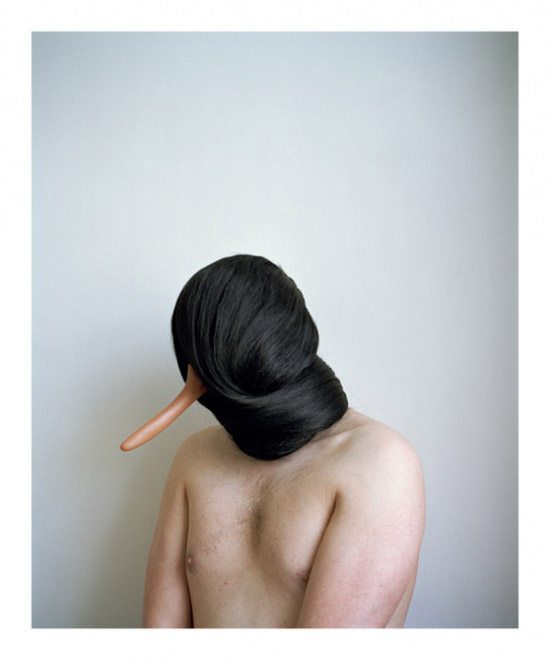
Borland’s previous work has generally fallen into two vague categories. On the one hand she has photographed various well-known faces, for example Cate Blanchett, Nick Cave (a long time friend), members of the cast of The Proposition (directed by husband John Hillcoat) and even the Queen in unusual settings. Each time she has gained a remarkably relaxed and personal portrait. On the other hand this new work follows on from her pre-occupation with the surprising effects gained by slightly distorting the naked body. In particular her celebrated 2003 series ‘Bunny’ employed the same tactics of neutral cover-up and smudged make up to produce an animalistic and animation-esque being. The artist referred to Bunny when asked about her inspiration for the pieces, seeing them as a ‘doll-like’ development. Seeing the models in the gallery next to such distorted and de-humanised visions of themselves, one wonders how much input they had in how they were depicted. Borland mentions that she has indeed increasingly invited collaboration, especially with these models, friends of hers, and she credits her relaxed and chatty manner with her ability to get such informal and unusual portraits from her subjects.
As an exhibition, I see ‘Smudge’ as a remarkable achievement. It is at once a celebration of the spirit of dress-up and a lamentation of the loss of innocence which therefore infects it. Individually, the portraits are likely to lose this cohesion and simply disturb or confuse. Take the full journey while you can.
Other Criteria Gallery until 7th April
Images: Polly Borland, Untitled, 2010
From the series Smudge
© the artist and Other Criteria
www.othercriteria.com



